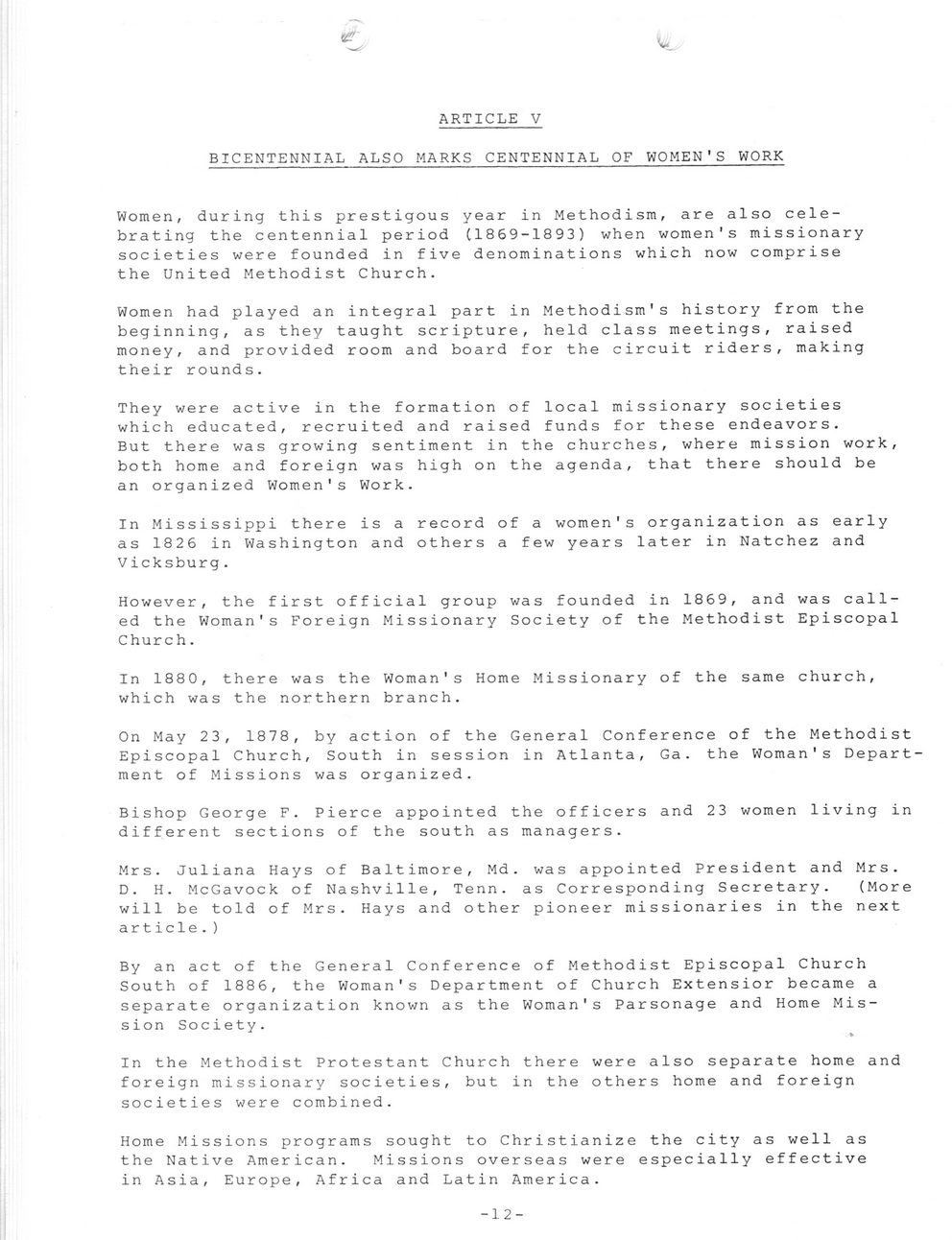This text was obtained via automated optical character recognition.
It has not been edited and may therefore contain several errors.
ARTICLE V BICENTENNIAL ALSO MARKS CENTENNIAL OF WOMEN'S WORK Women, during this prestigous year in Methodism, are also celebrating the centennial period (.1869-1893) when women's missionary societies were founded in five denominations which now comprise the United Methodist Church. Women had played an integral part in Methodism's history from the beginning, as they taught scripture, held class meetings, raised money, and provided room and board for the circuit riders, making their rounds. They were active in the formation of local missionary societies which educated, recruited and raised funds for these endeavors. But there was growing sentiment in the churches, where mission work, both home and foreign was high on the agenda, that there should be an organized Women's Work. In Mississippi there is a record of a women's organization as early as 1826 in Washington and others a few years later in Natchez and V icksburg. However, the first official group was founded in 1869, and was called the Woman's Foreign Missionary Society of the Methodist Episcopal Church. In 1880, there was the Woman's Home Missionary of the same church, which was the northern branch. On May 23, 1878, by action of the General Conference of the Methodist Episcopal Church, South in session in Atlanta, Ga. the Woman's Department of Missions was organized. Bishop George F. Pierce appointed the officers and 23 women living in different sections of the south as managers. Mrs. Juliana Hays of Baltimore, Md. was appointed President and Mrs. D. H. McGavock of Nashville, Tenn. as Corresponding Secretary. (More will be told of Mrs. Hays and other pioneer missionaries in the next By an act of the General Conference of Methodist Episcopal Church South of 1886, the Woman's Department of Church Extensior became a separate organization known as the Woman's Parsonage and Home Mission Society. In the Methodist Protestant Church there were also separate home and foreign missionary societies, but in the others home and foreign societies were combined. Home Missions programs sought to Christianize the city as well as the Native American. Missions overseas were especially effective in Asia, Europe, Africa and Latin America. -12-

Main Street Methodist Church Document (024)